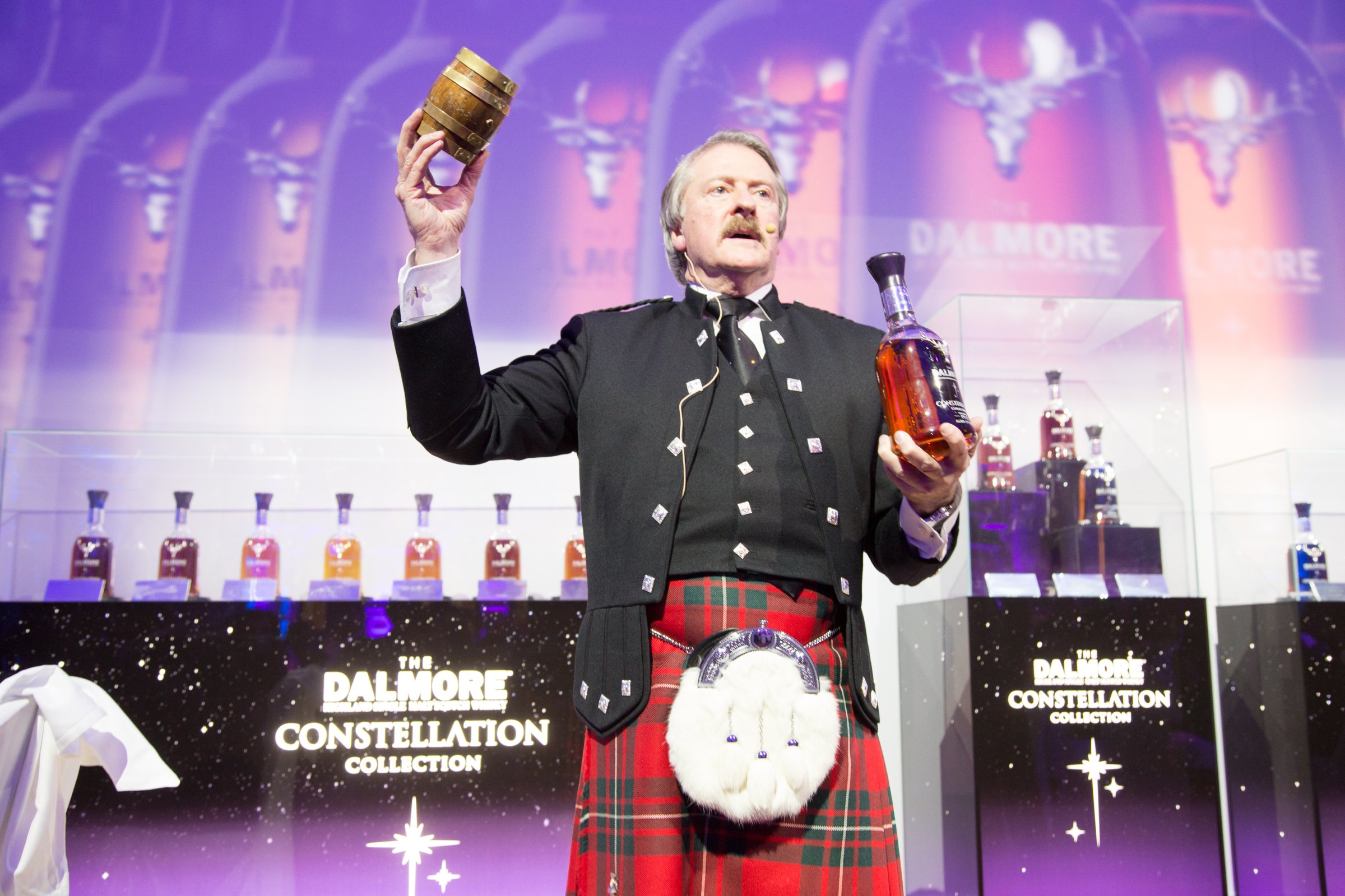
Richard Paterson knows his way around a whiff of whiskey.
The Scotland-based Master Distiller made his name mixing rare and expensive bottles, like a 64-year-old Dalmore that initially sold for as much as $50,000 and can now be found at auction for upwards of $200,000. Paterson, who currently works with The Dalmore, is nicknamed “The Nose” for his olfactory skill. He is in his 50th year of whisky tasting.
Master Distillers are members of an elite group who have spent their lives training to design craft liquors and detect the subtle flavors that the rest of us can’t. And with a whisky industry that’s booming, brands are beating earnings estimates as popular taste grows fond of the brown stuff. Last year, American consumption of whisky grew up to nearly 8 percent in some categories, according to the U.S. Drinks Conference. In turn, the expertise of true Master Distillers has grown in value.
That’s where Paterson comes in. A third-generation whisky blender, he grew up with the stuff, starting at eight years old when his father first introduced him to the complex, layered world of Scotch in his native Scotland.
“When he opened the doors [of the warehouse], I was hit with the smell of whisky, I could see the silhouettes of the casks,” Paterson said in an interview with TIME. “Everything was a mystery… is it sweet like a chocolate bar, or dry like the dust on the floor?” At that age, Paterson may not have been drinking the hard stuff — but he was introduced to a world of nuanced scents and aromas.
Paterson spends his days monitoring the maturation of his malts, which can include “nosing” or inhaling hundreds of cask samples each day, one nostril at a time. In fact, he even took out a $2.5 million insurance policy on that precious nose a few years ago with Lloyd’s of London, although it has since lapsed.
He describes whisky almost as a perfume, with 26 different notes to analyze and mix: dry, sweet, full, fat. While many fine restaurants have a sommelier for wine — and the skill set is, in some ways, similar — whisky masters are a rarer breed. And unlike master sommeliers, who primarily taste and craft lists, Master Distillers also play the role of oenologist and vintner in the process of putting a bottle together.
In 2011, Paterson was approached to bring back a bottle of Ernest Shackleton’s own 1907 whisky, discovered under the remains of the famous explorer’s Antarctic shed. Paterson journeyed to New Zealand and back to collect the precious cargo, carrying it to his Scottish lab by private jet under lock and key (and handcuff).
“It was still drinkable after 103 years under the ice,” Paterson explained; the whisky hadn’t frozen in all that time. He was able to taste it by inserting a syringe through the cork and withdrawing some of the priceless liquid, which turned out to be a much more subtle, elegant spirit than many expected. After that, the Master Distiller was able to conduct an analysis and craft a Shackleton blended malt to imitate the flavor of the century-old spirit.
His considers his role both an art and a craft; much of it is about choosing the right combination of a cask that will “bring the beauty out” of the whisky “like a good dress,” while monitoring the complex aging process of his many malts.
“The single malts are almost like my children,” he said. “You have to nurture them, you have to look after them.”
“The greatest pleasure I get is watching people’s faces as they drink their whisky,” he added. “The eyes will always be barometers.” Now in his 50th year of tasting whisky, Paterson has plenty to teach the growing audience of global drinkers as the market for the craft spirit only continues to grow.
More Must-Reads from TIME
- Cybersecurity Experts Are Sounding the Alarm on DOGE
- Meet the 2025 Women of the Year
- The Harsh Truth About Disability Inclusion
- Why Do More Young Adults Have Cancer?
- Colman Domingo Leads With Radical Love
- How to Get Better at Doing Things Alone
- Michelle Zauner Stares Down the Darkness
Write to Raisa Bruner at raisa.bruner@time.com